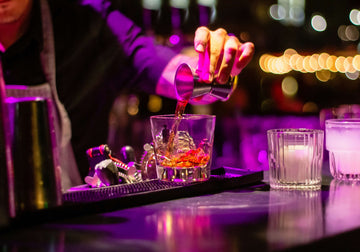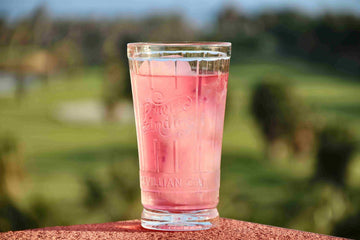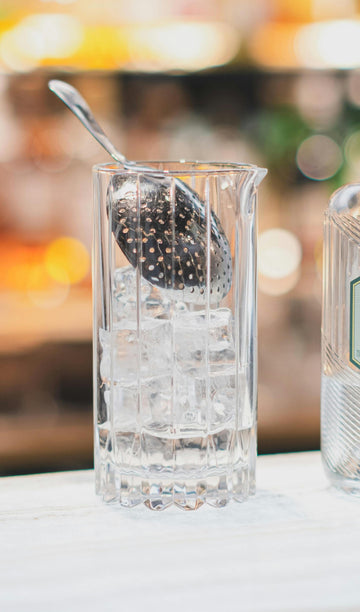Differences between Gin and Vodka | Filey Distillery
by William Rusling on Oct 31, 2023
Welcome to the ultimate showdown between two of the world's most popular spirits: gin and vodka. Whether you're a seasoned connoisseur or a curious beginner, this article aims to unravel the unique characteristics that set gin and vodka apart.
From their historical origins and key ingredients to their distinct flavour profiles and cultural significance, we'll delve deep to help you make an informed choice for your next cocktail.
Let’s dive right in!
Origin of Gin
Gin's journey began in the 17th century, although its precursor, genever, had already been popular in the Netherlands. British soldiers fighting in the Dutch War of Independence discovered genever and brought the concept back to Britain. Over time, genever was anglicised to what we now know as gin. It didn't take long for the spirit to embed itself in the fabric of British society, helped in part by the government's deregulation, which made it easier for gin to be produced and sold. As more women became hooked on gin between 1720 and 1757, gin became known as mother's ruin.
Significance in British Culture
Gin holds a unique position in British culture, to the point where it's hard to think of one without the other. The spirit gained a somewhat dubious reputation during the period known as the "Gin Craze" of the 18th century, when excessive gin consumption was rampant. Since then, it has been rebranded and embraced as a more refined spirit. From classic British Gin Palaces to modern gin bars, and from literature like Dickens to modern-day television, gin has been immortalised as a symbol of British culture. The Brits even gave the world the iconic Gin and Tonic, initially conceived as a medicinal concoction to combat malaria.
Origin and History of Vodka
Vodka's roots can be traced back to Eastern Europe, with Russia and Poland both claiming the spirit as their own. The word "vodka" is derived from the Slavic word "voda," meaning water, which reflects the spirit's fundamental characteristic of purity. Traditionally made from fermented grains or potatoes, vodka has been produced since at least the 8th century, although some historical records suggest it could be even older.
Vodka as a Global Spirit
While vodka was initially popular primarily in Eastern Europe, it has spread its wings to become a global phenomenon, especially post-World War II. Brands like Smirnoff, Grey Goose, and Absolut have been instrumental in turning vodka into a worldwide staple. It’s now the go-to spirit for a range of cocktails and is praised for its versatility and neutrality. Whether you’re in a bar in New York or a pub in Sydney, vodka is omnipresent, making it a truly international spirit.
Key Ingredients and Distillation Process
The essence of any spirit lies in its ingredients and the process through which it is created. The distillation method and key components shape the aroma, texture, and flavour, making each spirit unique. Let’s dissect the core elements and production techniques that give gin and vodka their distinct personalities.
Gin: The Symphony of Botanicals
The cornerstone of every gin is the juniper berry. It’s what gives gin its signature piney, herbal notes and differentiates it from other spirits. Juniper is so integral to gin that, by legal definition, a spirit must possess the predominant flavour of juniper to be classified as gin. But it’s not just about the juniper; gin often incorporates a range of other botanicals like coriander, citrus peel, and angelica root to add complexity and depth. For example, Filey Gin uses a range of botanicals, including juniper, angelica, and some secret ingredients, that perfectly complement one another to create a unique and delightful flavour profile.
The Distillation Process
Gin is typically produced in one of two ways: pot distillation or column distillation. In pot distillation, the botanicals are steeped in a neutral spirit before being redistilled. Column distillation, on the other hand, allows for continuous distillation, where botanicals are often added to the spirit vapour, allowing them to infuse as the spirit condenses. Regardless of the method, the distillation process is crucial in extracting flavours from the botanicals and marrying them into a harmonious blend. The result is a spirit bursting with a myriad of flavours, from floral to spicy, depending on the botanicals used.
You can experience the process of gin distillation for yourself, on Filey Distillery’s Tour.
Vodka: The Pursuit of Purity
Unlike gin, which has a hero ingredient in juniper berries, vodka is more about the absence of a defining characteristic. Traditionally, vodka is made from grains like wheat, rye, or corn, although potato vodka is also quite popular. The main goal is to produce a spirit as neutral and flavourless as possible.
The Distillation Process
Vodka is usually distilled at a high proof to yield a product that is as pure as possible. The spirit often undergoes multiple rounds of distillation and filtration to remove impurities and any residual flavours. Charcoal filtering is commonly employed to achieve the spirit's characteristic neutrality. Some premium vodkas even boast about the number of distillation rounds, emphasising their focus on purity.
Flavour Profiles and Popular Cocktails
Both gin and vodka bring distinct flavours to the table, and each has its own set of classic cocktails that showcase its unique characteristics. Below, we explore the flavours you can expect from these spirits and some of the iconic drinks they star in.
Gin: Herbal, Floral, and Citrus Notes
Gin is a flavour-rich spirit, thanks to the medley of botanicals it's distilled with. While the primary note is always juniper, which lends a piney, evergreen flavour, most gins also include a range of other botanicals. These can add citrusy, floral, and spicy notes, among others, creating a complex and layered flavour profile.
For example, you might detect hints of lavender, grapefruit, or even black pepper depending on the specific blend of botanicals.
Gin is often complimented with fruit like a slice of orange or lemon.
Variants: London Dry, Old Tom, and Others
There are several types of gin, each with its unique characteristics:
- London Dry: This is perhaps the most popular type of gin, known for its strong juniper flavours and dry finish.
- Old Tom: A slightly sweeter gin, Old Tom is often described as a bridge between London Dry and the sweeter, maltier Dutch genever.
- Sloe Gin: Made by steeping sloe berries, this type is a liqueur and has a fruity, tart profile.
- Pink Gin: Originating as a cocktail made from gin and a dash of Angostura bitters, today's commercial Pink Gins often include additional flavourings and colouring. Typically infused with fruits like strawberries or raspberries, this variant has a fruity and often sweeter profile compared to traditional gins. You can learn more about what makes pink gin pink.
Classic Gin Cocktails
Gin and Tonic: The quintessential gin cocktail, simple yet satisfying.
Negroni: A cocktail of gin, Campari, and sweet vermouth, it's as beautiful as it is bittersweet.
Martini: While it can be made with vodka, many consider gin the original and best base for this iconic cocktail.
The Neutral Spirit
Unlike gin, vodka is prized for its neutrality. It acts like a blank canvas, allowing other flavours in cocktails to shine. Because it’s typically distilled to a high proof and filtered, true vodka has no distinct taste or smell.
Flavor-Infused Variants
While traditional vodka is neutral, many brands offer flavoured varieties, such as vanilla, berry, or even more exotic flavours like chilli pepper or bacon.
Classic Vodka Cocktails
- Vodka Martini: A crystal-clear cocktail that lets the vodka shine.
- Moscow Mule: Vodka, ginger beer, and lime juice served in a copper mug.
- Bloody Mary: A savoury cocktail that pairs vodka with tomato juice and various spices and flavourings.
When is it More Appropriate to Use Gin or Vodka?
Gin: Best for cocktails that benefit from its complex botanical flavours, such as a Negroni or a Gin and Tonic. It's also a popular choice for more formal or classic settings.
Vodka: Ideal for cocktails where you want the mixers or other flavours to take centre stage, like in a Moscow Mule or a Bloody Mary. It's versatile and can fit into almost any occasion, formal or casual.
What’s Stronger, Gin or Vodka
When it comes to alcohol content, both gin and vodka typically fall within a similar range, usually between 37.5% to 50% alcohol by volume (ABV). Commonly, both spirits are found with an ABV of around 40%. Neither gain nor vodka is inherently "stronger" than the other in terms of alcohol content; instead, their strengths are more a matter of personal perception.
The botanical flavours of gin, which can include notes of juniper, citrus, and various herbs, may give it a perceived stronger or more complex taste. On the other hand, the neutral profile of vodka can sometimes make the alcohol taste more pronounced, leading some to describe it as "stronger" in that sense. If you're concerned about alcohol strength, it's always best to check the ABV listed on the specific bottle you're considering.
Conclusion
Gin and vodka, each with their unique characteristics and cultural roots, offer something for every palate. Both have comparable alcohol content, making the choice between the two a matter of taste and occasion. Whether you're in the mood for the botanical complexity of gin or the versatile neutrality of vodka, you're now equipped to make an informed choice. Cheers to finding your perfect pour!
You can learn more about how gin is distilled on our very own Filey Distillery tour, we also offer our award-winning signature gin and pink gin.



